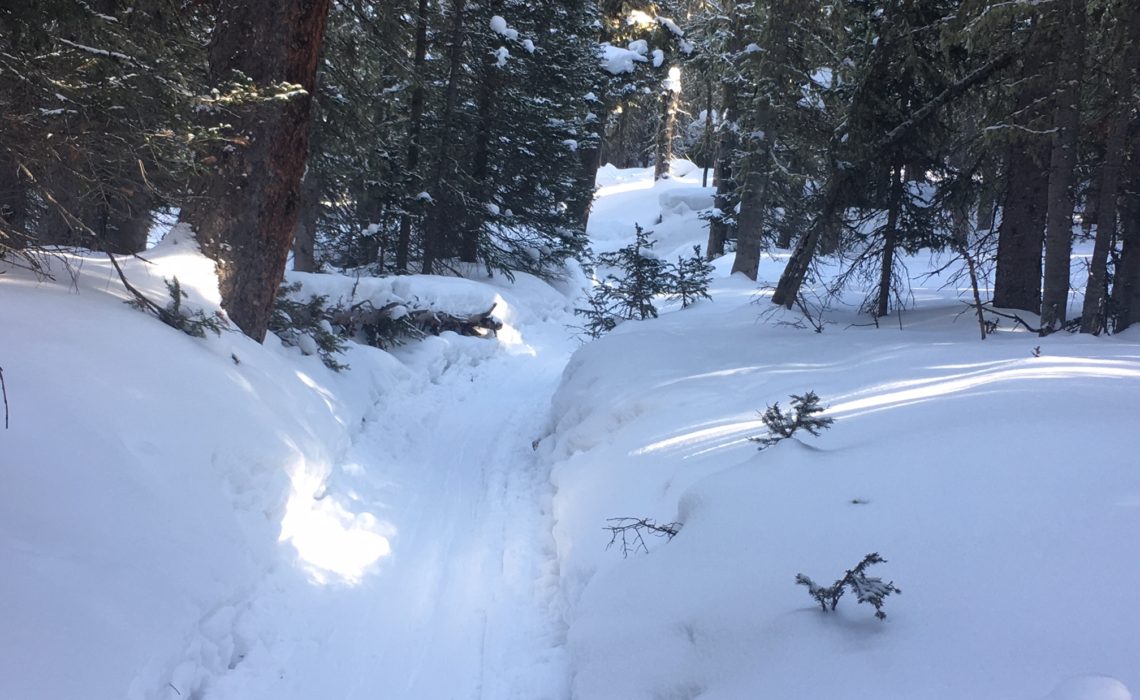
Where the heck was the trail? Or more importantly, where was the trailhead?
When I’d decided to go on a hike around Mt. Shasta in early October, I’d thought there might be snow, but as I walked farther into the forest, the snow had become deeper. Still I didn’t worry, because I figured I could always turn around and follow my tracks back to the trailhead. But suddenly, the wind started to blow and I couldn’t see my tracks.
Shit.
My heart pounded in my chest, as I tried not to panic. I’d only brought my day pack with a few items in it. But among those few items, I did bring a map and compass. I was able to figure out using the map and where the road was that I could walk cross-country and hit the road. Long ago, despite my protests, my boyfriend had spent hours showing me how to use a map and compass. I felt pretty confident I was heading in the right direction.
Still when I hit the road, I heaved a sigh of relief. I would not die in the snow and become a newspaper story. Thank God!
I pride myself on being self-sufficient. As a former Park Ranger, I’ve hiked and backpacked hundreds of miles by myself. It’s easy to believe you’re invincible. But I was reminded last week that no one is invincible. I reflected on this, when I read the article about a twenty-seven year old who went missing after he headed off for a hike with his dog from Hessie Trailhead last Wednesday. I’m sure when he started his hike, he just thought it would be fun and beautiful hike and he’d be home by dinner.
Wilderness can be wonderfully uplifting, but also dangerous. By it’s very nature, it is meant to provide a sense of solitude and wonder. But at the same time, wilderness can present dangers especially if you are hiking alone. When I grew up without cell phones or GPS, I learned about the ten essentials. Extra water, food, clothing, along with means to start a fire and the ability to spend the night if necessary. Part of those essentials included carrying a map and compass. The book, Staying Found, details what you can do to insure your safety as you explore the backcountry.
Now we have more resources available to us. But that doesn’t make the ten essentials no longer necessary. The reality is if you want to be able to go off on a hike by yourself any time of year, you need to be prepared. Be prepared to “stay found.”
A GPS can help you navigate when you are walking snowy terrain where trails are no longer visible. But it won’t give you a big picture of where you are. So don’t throw away your map just yet. It can help orient you when you’re standing on a snowy ridge and trying to understand how to get back to where you started.
If you plan to hike a lot alone or even with a partner, consider buying a satellite tracking device. Two that I’ve used and are quite familiar with are the Spot Satellite Tracker and the Garmin Inreach. Both of these devices can be used to send an emergency notification via satellite which will activate law enforcement to start a search for you. This notification includes the GPS coordinate s of the location. If you do activate the device, make sure you stay where you sent the notification so that search and rescue can find you. And that’s where having extra clothing and food can be life-saving. Depending on weather conditions, it could take quite awhile for the rescue crew to arrive.
These devices also allow for non-emergency notification as well. Both my husband and I have taken them with us on backpack trips to send notifications to each other or friends so they can follow us on their trip. You can set it up to email or text to friends or family. The InReach even allows for two way communication between yourself and someone else.
It even proved to be a huge help several years ago, when my husband got separated from his two hiking partners on a backpack trip in Rocky Mountain National Park. That summer, I worked as Park Ranger at the park and got notified by park radio that dispatch was trying to reach me. His friends had called to report my husband as missing. No one ever wants to hear that kind of news. Fortunately, my husband had a Spot Satellite Tracker with him and sent a notification I got that evening of where he was camped, saving me a sleepless night of worry.
Everyone who goes on a hike, a snowshoe walk, a backcountry ski should prepare for how they can stay found. It could make the difference between a fun story to tell friends or a terrible tragedy.

